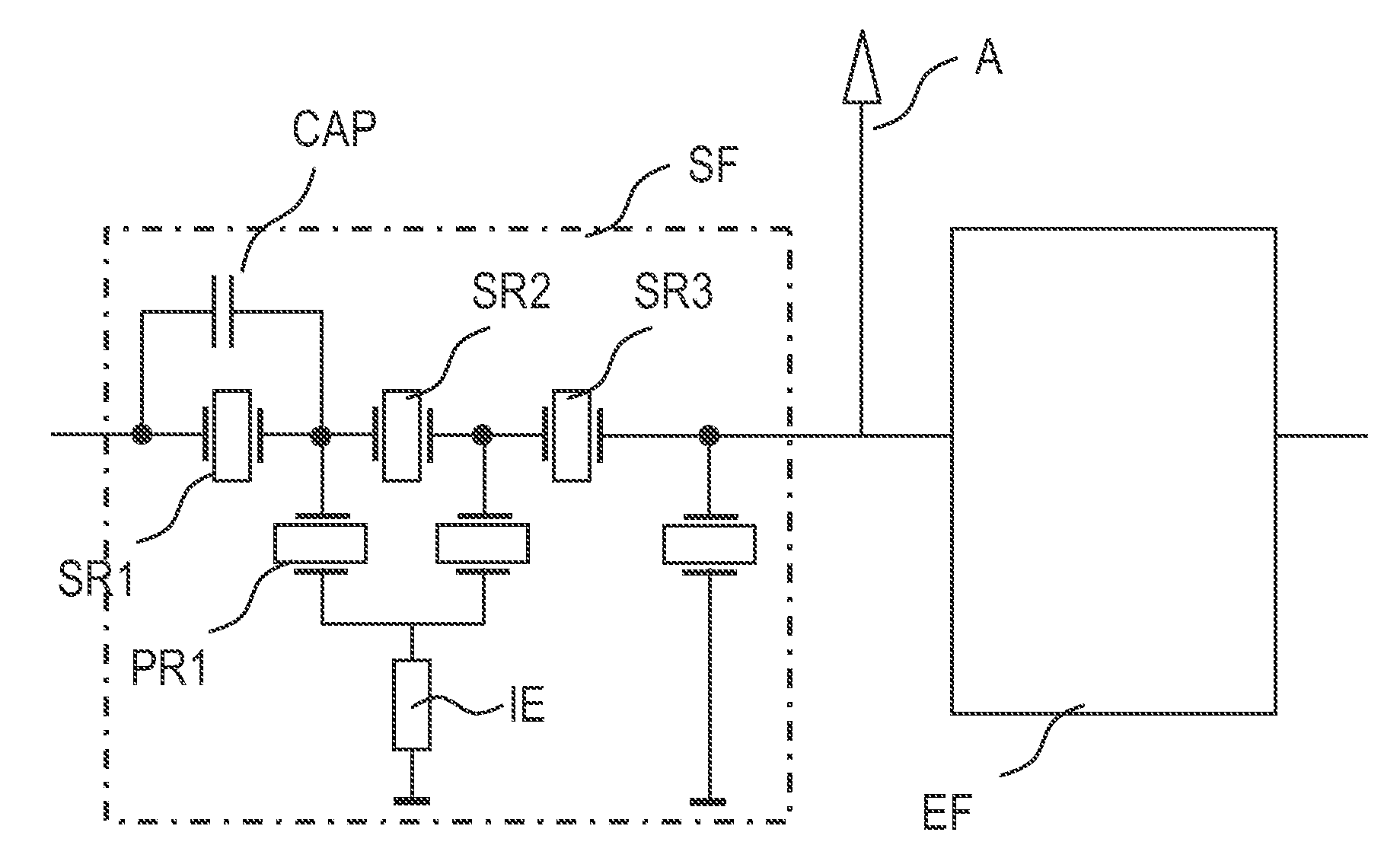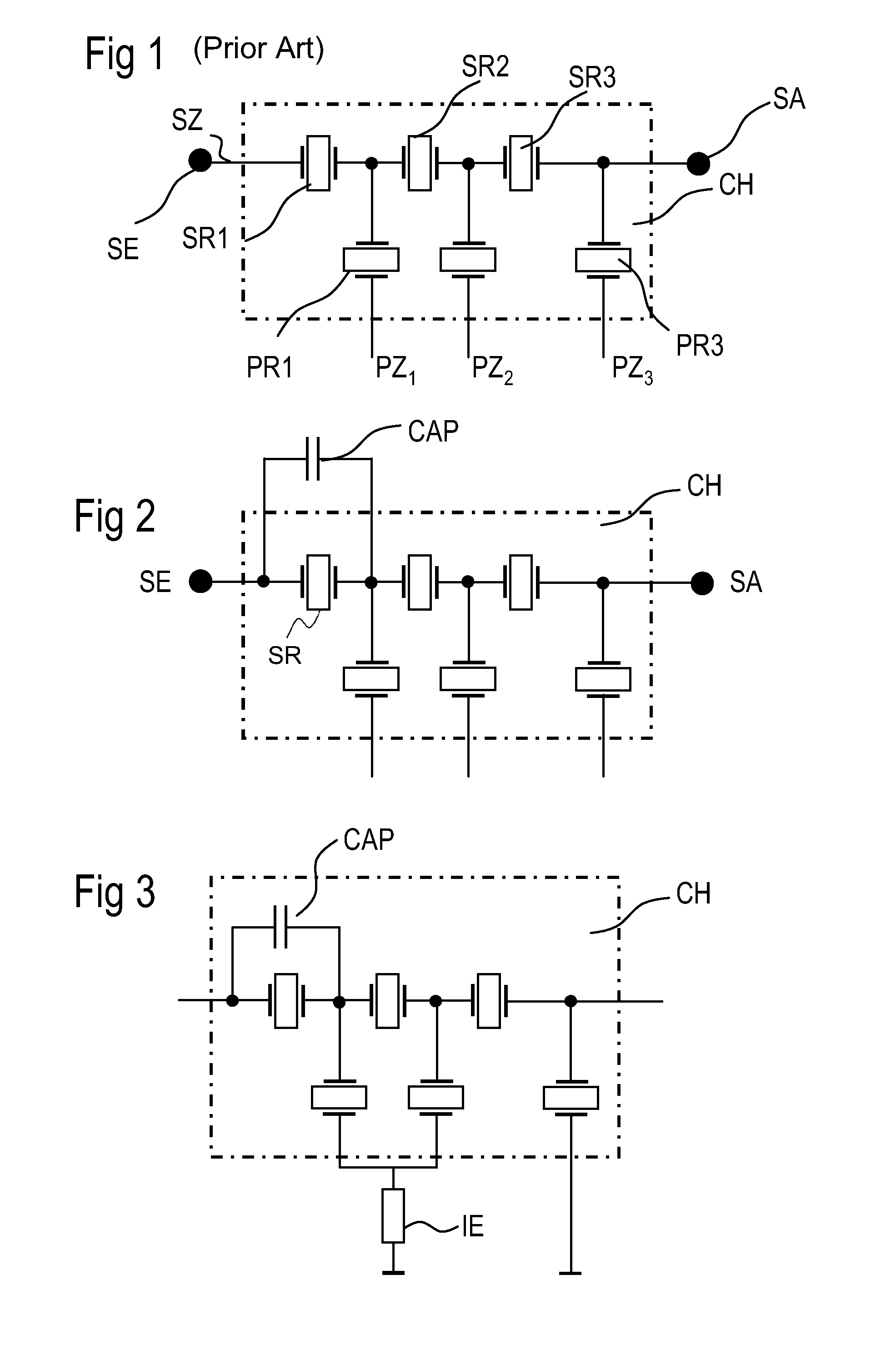Reactance Filter Having a Steep Edge
a technology of reactance filter and steep edge, which is applied in the direction of impedence network, electrical apparatus, piezoelectric/electrostrictive/magnetostrictive devices, etc., can solve the problems of increasing the ohmic loss of the reactance filter, requiring a larger chip area, or bringing about higher losses
- Summary
- Abstract
- Description
- Claims
- Application Information
AI Technical Summary
Benefits of technology
Problems solved by technology
Method used
Image
Examples
Embodiment Construction
[0065]FIG. 1 shows a reactance filter having a ladder-type construction as known from the prior art. The filter is formed from resonators on a chip CH as carrier. A series branch SZ is connected between a signal input SE and a signal output SA. Proceeding from nodes of the series branch, here three parallel branches PZ are connected with respect to a fixed potential and, in particular, with respect to ground. A parallel resonator PR is arranged in each of the parallel branches PZ. The series branch SZ comprises a series interconnection of series resonators SR.
[0066]FIG. 2 shows a reactance filter, wherein a capacitor CAP is connected in parallel with a series resonator SR. Advantages are already obtained if a single one of the series resonators SR is connected in parallel with a capacitor, although such a capacitor can also bridge a plurality of series resonators in parallel (not illustrated in the figure). At least one of the series resonators remains unchanged relative thereto.
[00...
PUM
 Login to View More
Login to View More Abstract
Description
Claims
Application Information
 Login to View More
Login to View More - R&D
- Intellectual Property
- Life Sciences
- Materials
- Tech Scout
- Unparalleled Data Quality
- Higher Quality Content
- 60% Fewer Hallucinations
Browse by: Latest US Patents, China's latest patents, Technical Efficacy Thesaurus, Application Domain, Technology Topic, Popular Technical Reports.
© 2025 PatSnap. All rights reserved.Legal|Privacy policy|Modern Slavery Act Transparency Statement|Sitemap|About US| Contact US: help@patsnap.com



